Want to feel fuller for lunch? Then eat these

If you have ever tried (and failed) to lose weight through dieting or detoxing you will know that one of the main obstacles that prevents you from reaching your weight loss goals is the constant feeling of hunger.
Hunger is why most diets simply don't work in the long-term. We feel hungry when we don't consume enough calories, but the types of food we eat can also impact how satisfied we feel after mealtimes. So what foods should you eat to ensure you stay fuller for longer?
We speak to Dietitian Lauren McGuckin about how the body controls hunger levels, and what foods to eat to stay fuller for longer without piling on the pounds:
How your body recognises that it's full
Satiety is the feeling of fullness after eating that suppresses the urge to eat for a period of time after a meal. Such feelings of fullness play an important role in controlling how much you eat.
'Many people believe that satiety is only determined by how full our stomachs feel after eating, but that is only part of the story,' explains McGuckin. 'When we eat or drink, the food enters our stomach and intestines where it is digested and the nutrients are absorbed, and a series of signals are sent to the hunger/fullness centres of our brain.'
'Hormones are then released in response to the nutrients as they enter the bloodstream, which trigger our bodies to recognise that we've had enough. This process generally occurs 15-20 minutes after we experience a feeling of fullness in our stomachs. How long we feel full for after eating is determined by what and how much we eat, as well as internal factors such as our fat stores.'
Factors that affect fullness
Research shows that enhanced satiety foods (those with an increased capacity to inhibit appetite in the period after eating) directly promote reduced food intake, and also help with healthy eating and weight management strategies, by lessening the effect of hunger on motivation and mood.
The following factors impact on how filling a particular food is:
• Energy density
This is defined as the amount of energy (or calories) per gram of a particular food. Lower energy density foods provide less energy per gram of food, enabling you to eat more of them without consuming too many calories. Examples of low energy density foods include, fruit and vegetables and foods with a high water content such as soups and stews.
• Fibre content
A fibre-rich diet is thought to promote satiety and weight management because it contains foods that have a low energy density, such as fruit and vegetables, which when eaten in the same quantities as high energy dense foods are equally as filling, but provide less calories. The way in which high fibre foods are digested also promotes satiety. Fibre slows down the emptying of the stomach, increases digestion time, and impacts on satiety hormone release- processes all associated with heightened sensations of fullness.
• Protein content
Studies show that foods high in protein seem to keep us fuller than foods high in carbohydrates or fat. Protein changes the levels of several satiety hormones, including ghrelin and GLP-1, which effect appetite. High protein foods include lean meat, fish, eggs, pulses, nuts, yoghurt and tofu.
💡 In a study featured in the Journal of the Academy of Nutrition and Dietetics, researchers found that protein does, in fact, make you feel fuller for longer.
• Glycaemic index (GI)
GI is a ranking between 0 and 100 given to foods, describing how quickly their carbohydrates are digested and absorbed into the blood. Rather than higher GI foods like white bread and pasta, low GI choices like wholegrain bread and pasta, oats, and unsweetened yoghurt gradually release their energy and keep us feeling fuller for longer.
• Fat content
Fat is also filling. However, 'it is also very energy dense and excessive consumption can lead to weight gain,' says McGuckin. 'Furthermore, a diet high in saturated fats can negatively affect heart health. Choose foods that are high in heart healthy fats such as nuts (also high in protein) and avocado or drizzle a tablespoon of olive oil on a salad.'
• How quickly you eat it
It can take 15-20 minutes after food is first eaten, for the full range of satiety signals to reach the brain. Eating too fast therefore promotes over eating, as you may not recognise how full you are until you've eaten too much.
Foods that keep you fuller for longer
McGuckin recommends including these seven essential foods in your diet to keep hunger at bay:
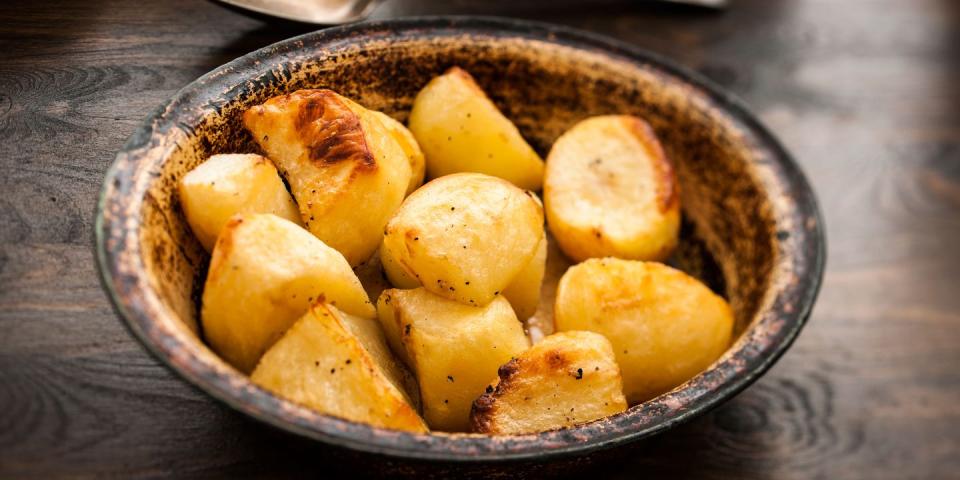
1. Potatoes
Potatoes have a high water content, and contain moderate amounts of fibre and protein. Back in 1995 a scale called the Satiety Index was developed, which ranked foods according to their ability to satisfy hunger- and potatoes came out top of the rankings. Potatoes should be eaten baked or boiled with their skins on to maximise the fibre content.

2. Eggs
Eggs are an excellent source of high-quality protein. A large egg contains around 6 grams of protein and includes all 9 essential amino acids. Eggs also ranked highly on the Satiety Index. Enjoy eggs for breakfast on a slice of wholegrain or rye bread for added fibre.
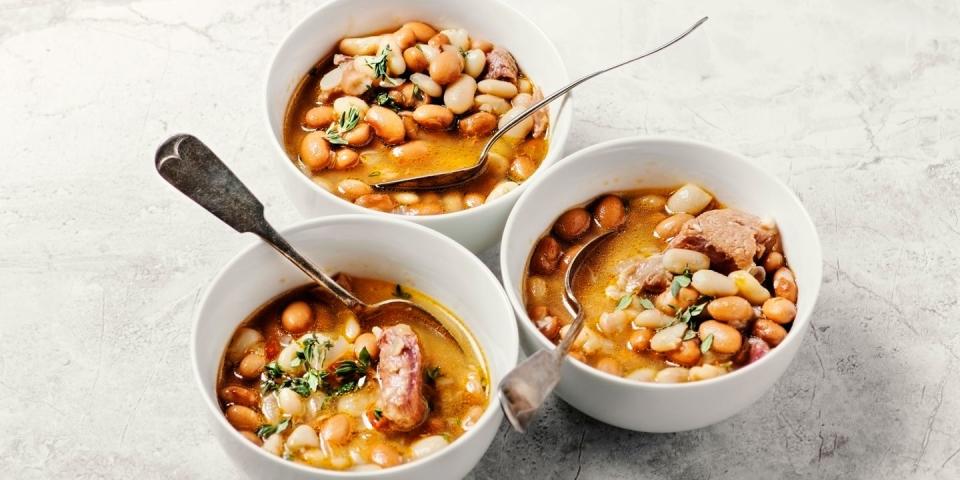
3. Bean soup
Soups and broths have a high water content, which means they fill your stomach for very few calories. Chunky bean soups are also high in protein, fibre and resistant starch — a slow release carb that keeps blood sugar levels steady.
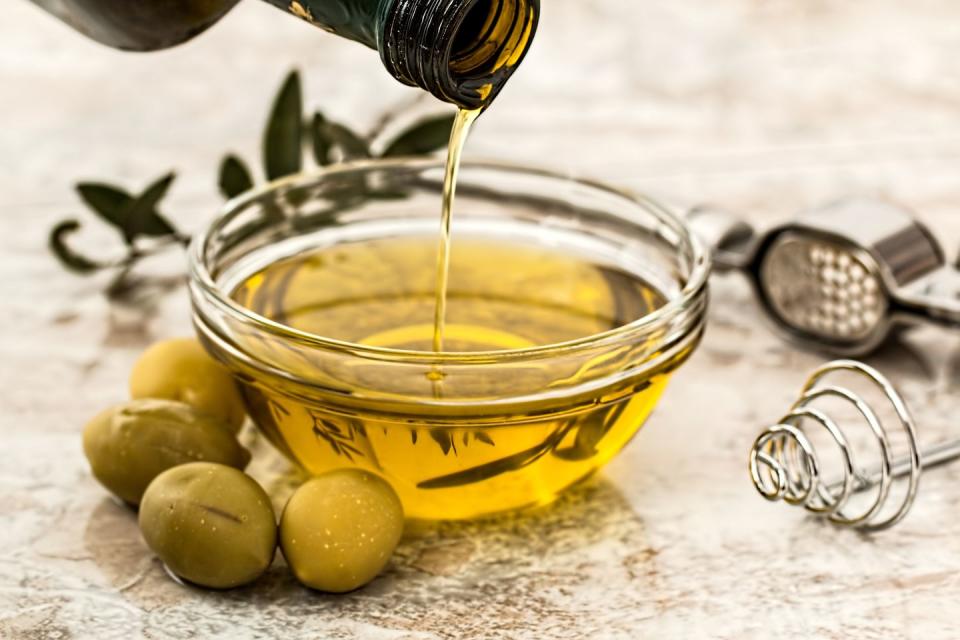
4. Extra virgin olive oil
Extra virgin olive oil is rich in oleic acid (a mono-unsaturated fat). The bio-active compound this contains is called OEA (derived from ingested oleic acid) and has been shown to increase satiety. Drizzle olive oil onto your salads and vegetables to increase their fullness factor.
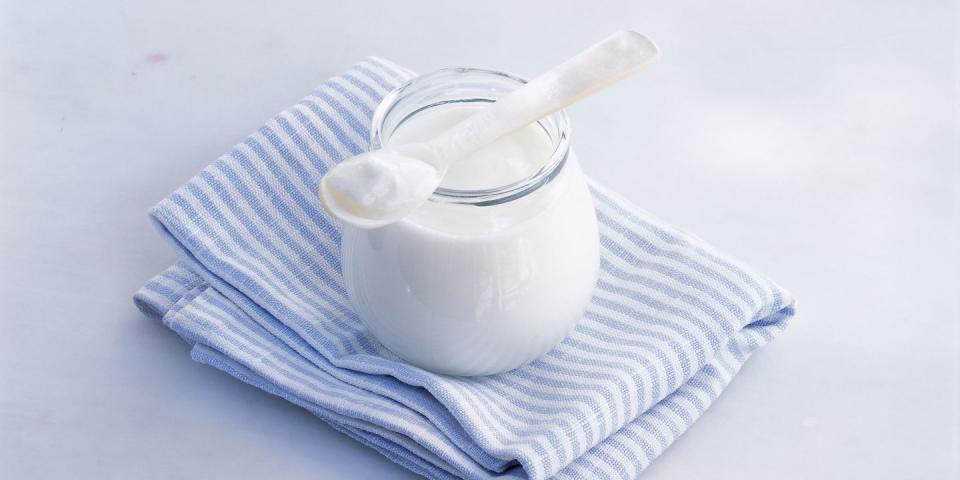
5. Greek yoghurt
Greek yoghurt contains double the protein content of regular yoghurt, and is great option either at breakfast or as a snack to manage appetite levels. Top your yoghurt with fresh fruit and oats (also high on the Satiety Index) for added fibre and nutrients.
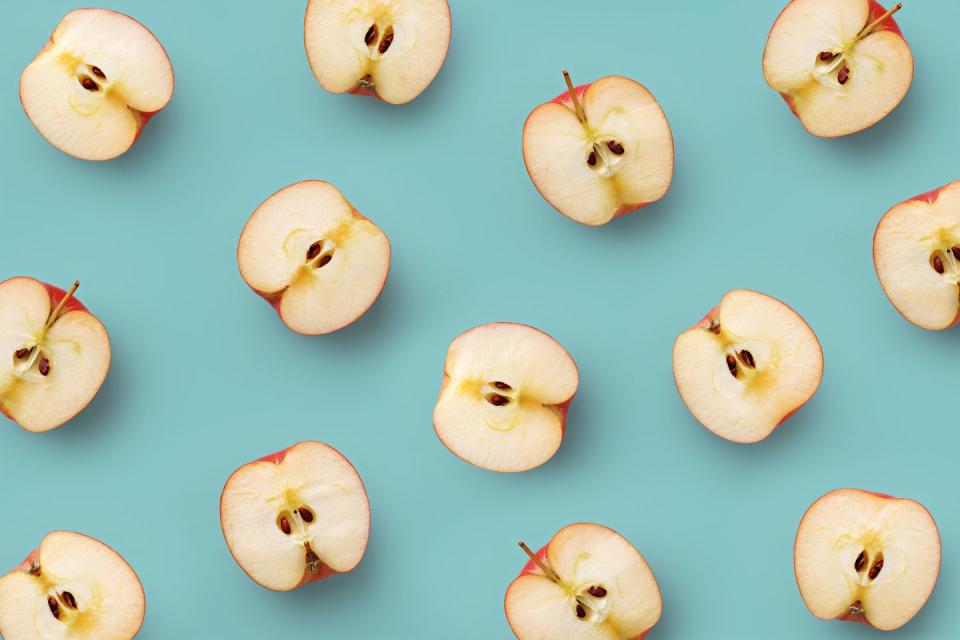
6. Apples
Rich in fibre (a medium sized apple contains about 4g fibre, 17 per cent of your recommended daily intake) and a low glycaemic index. Combine apples with a tablespoon of protein-packed peanut butter for a hunger-suppressing snack.

7. Almonds
A small handful (about 30g) of nuts is a satisfying snack to keep hunger at bay between meals, and when eaten with foods containing carbohydrates, they reduce the glycaemic index of the meal. Nuts are also a good source of protein and heart healthy fats.
Last updated: 28-11-19
You Might Also Like


